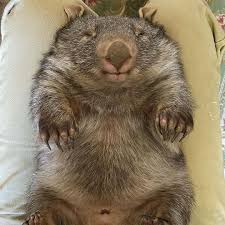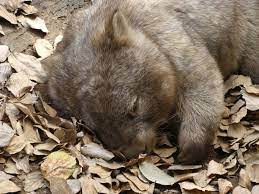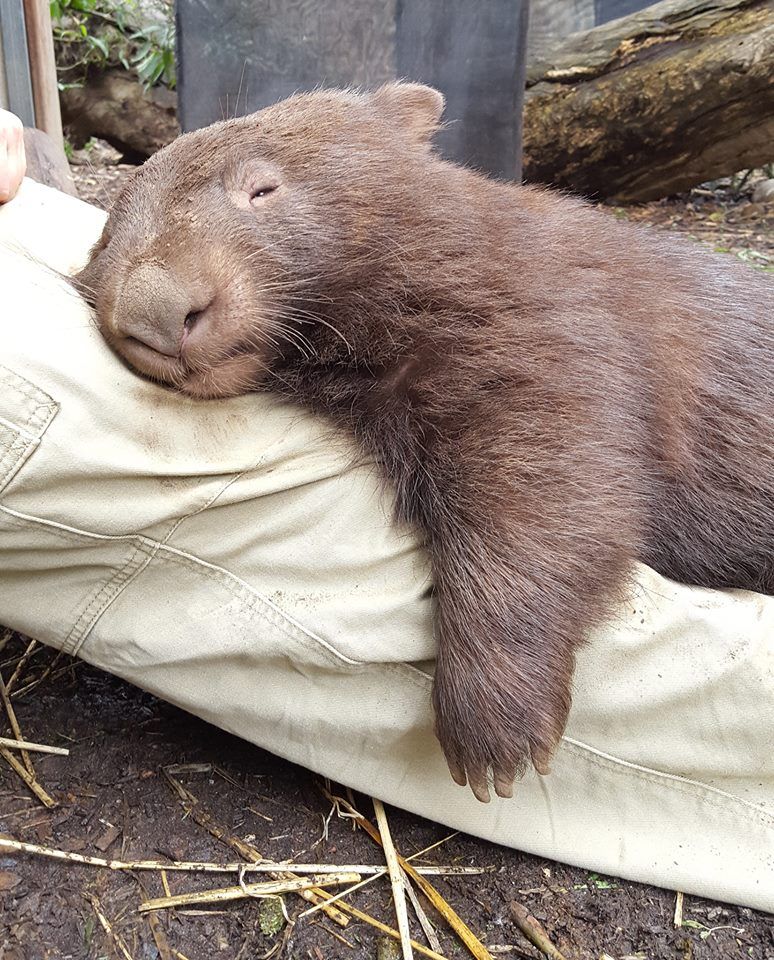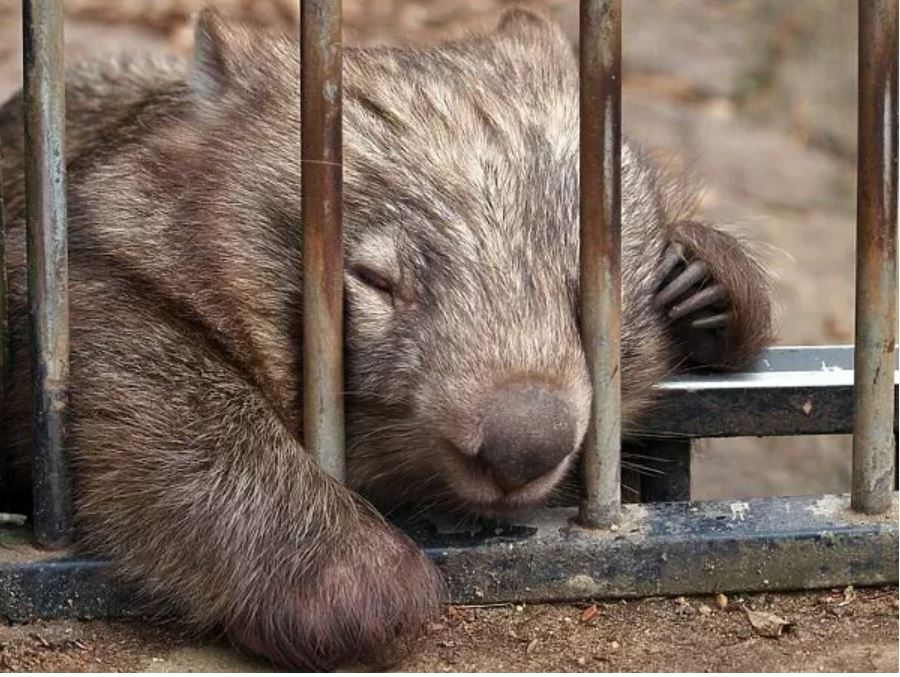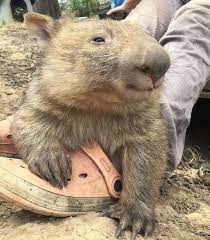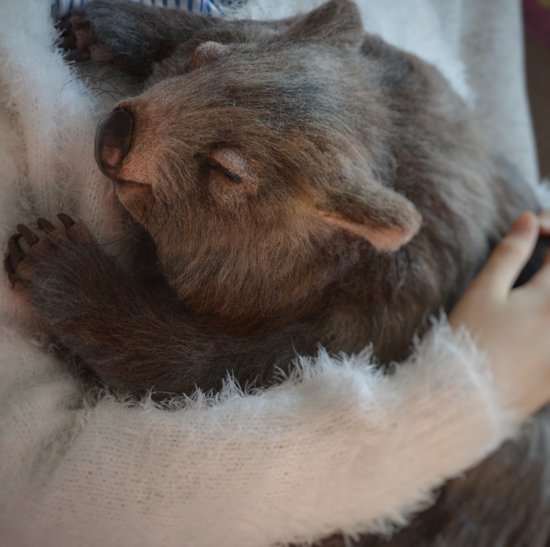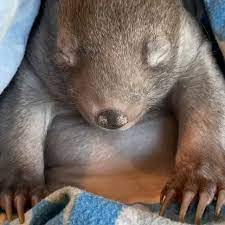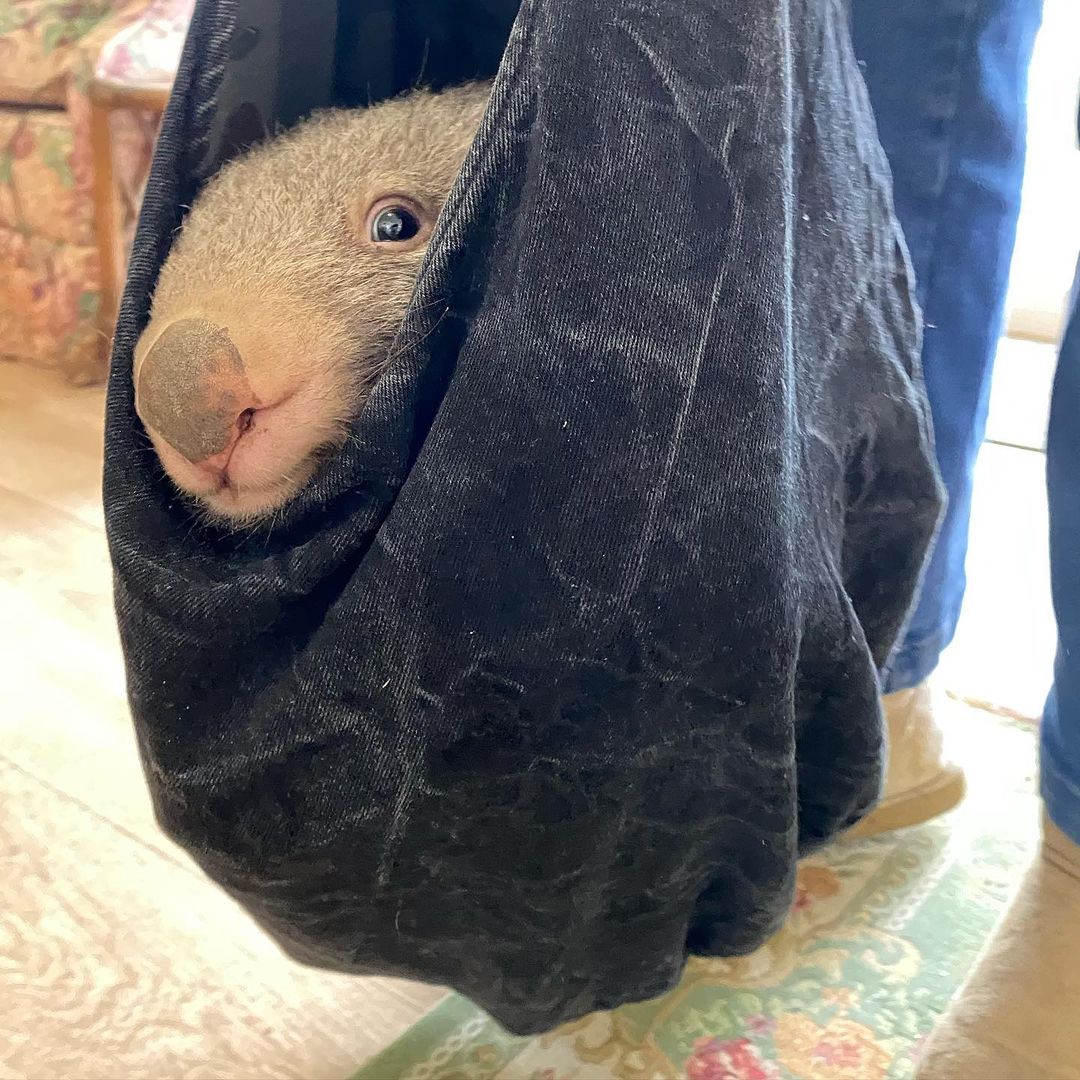
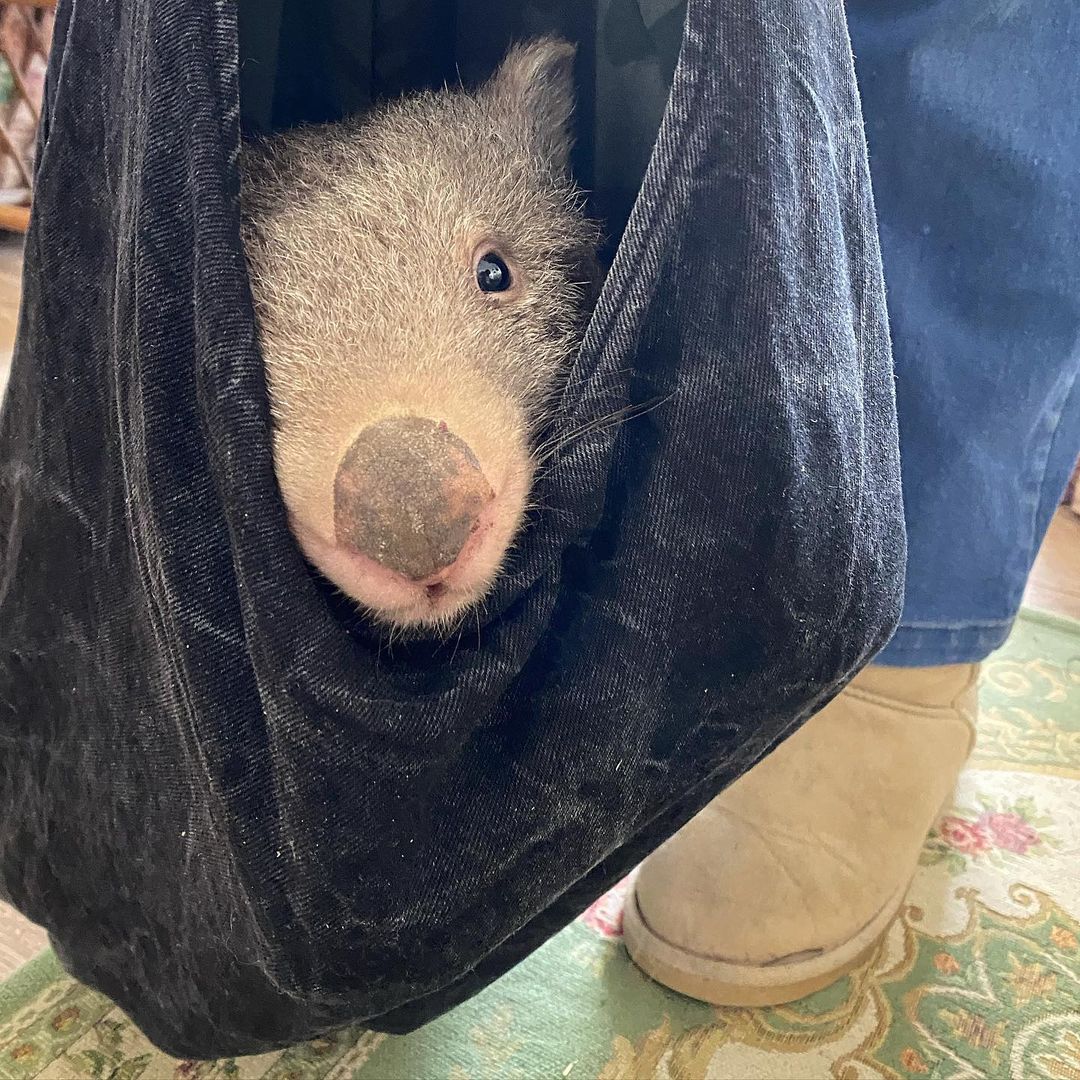
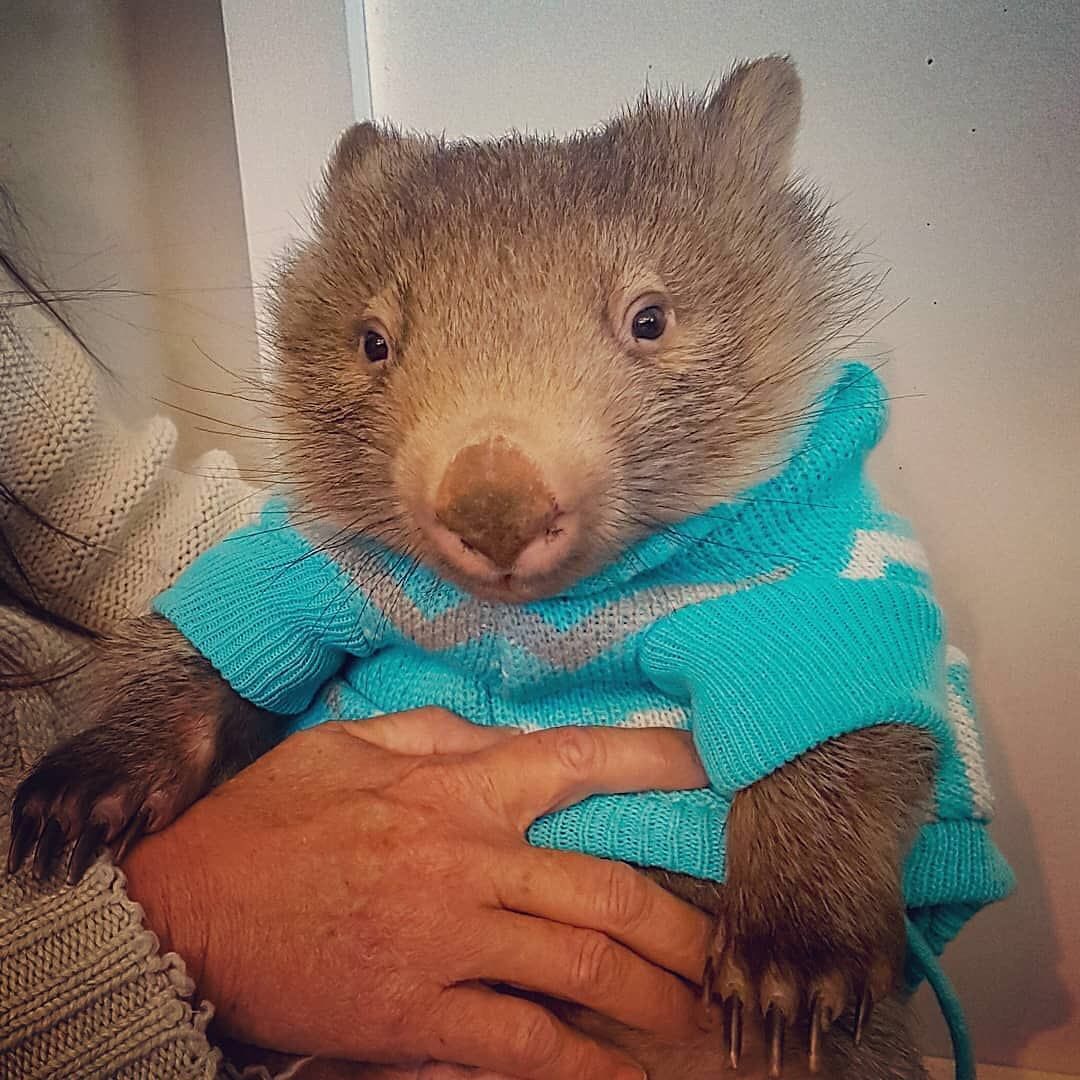
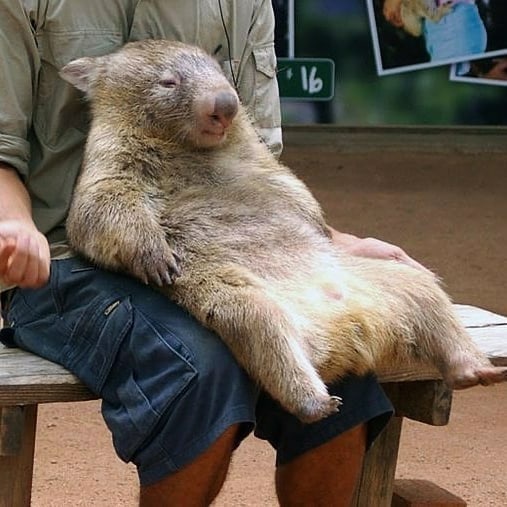
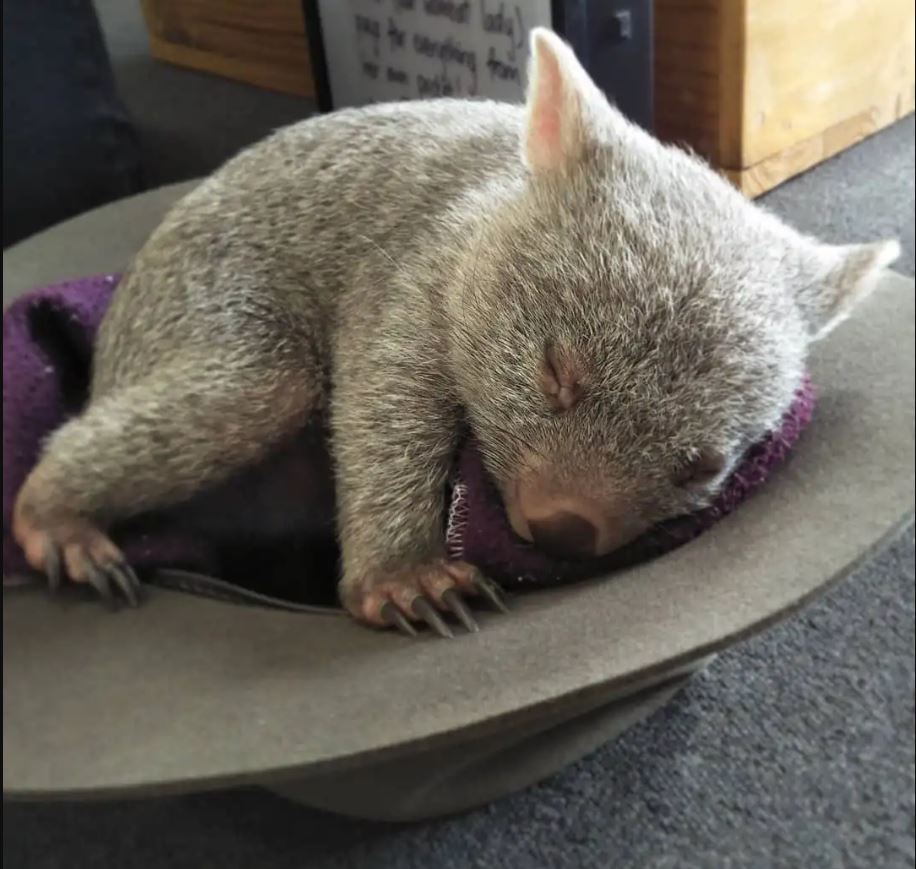
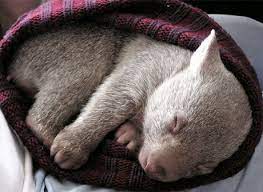

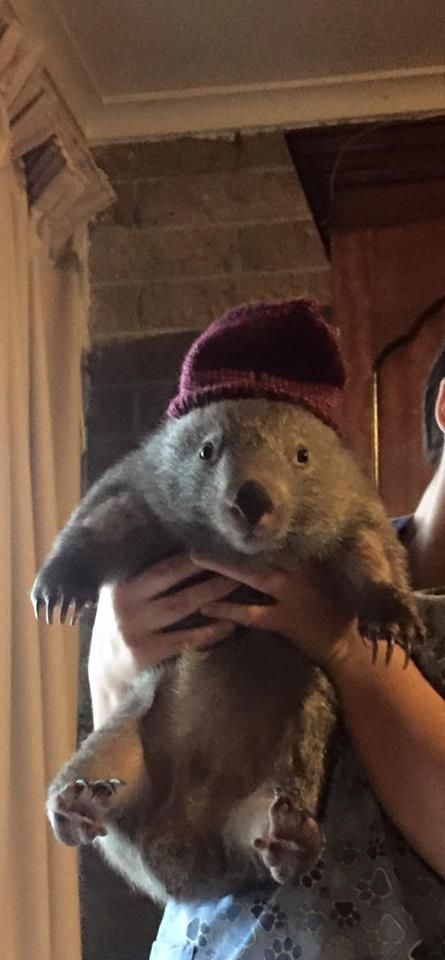
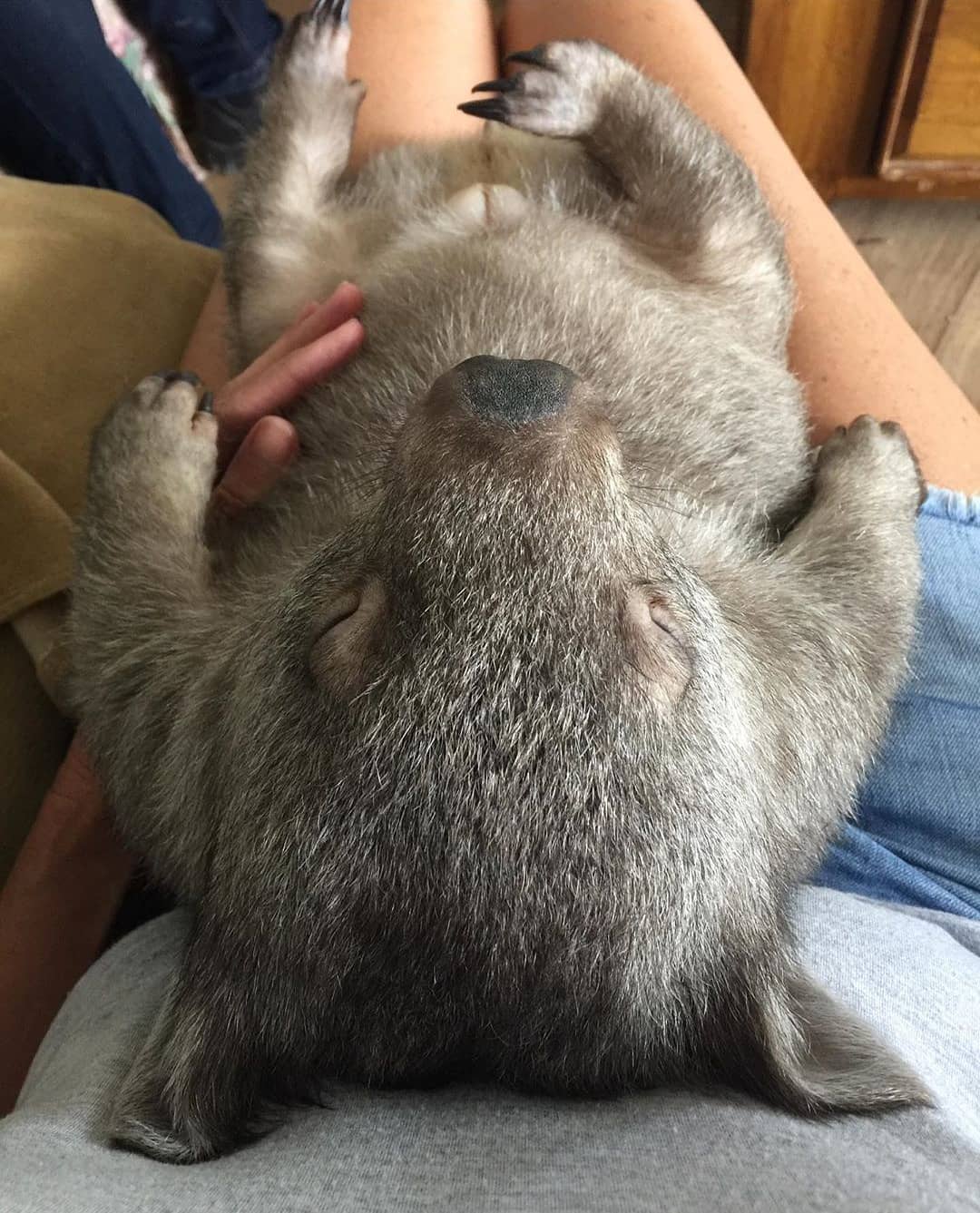
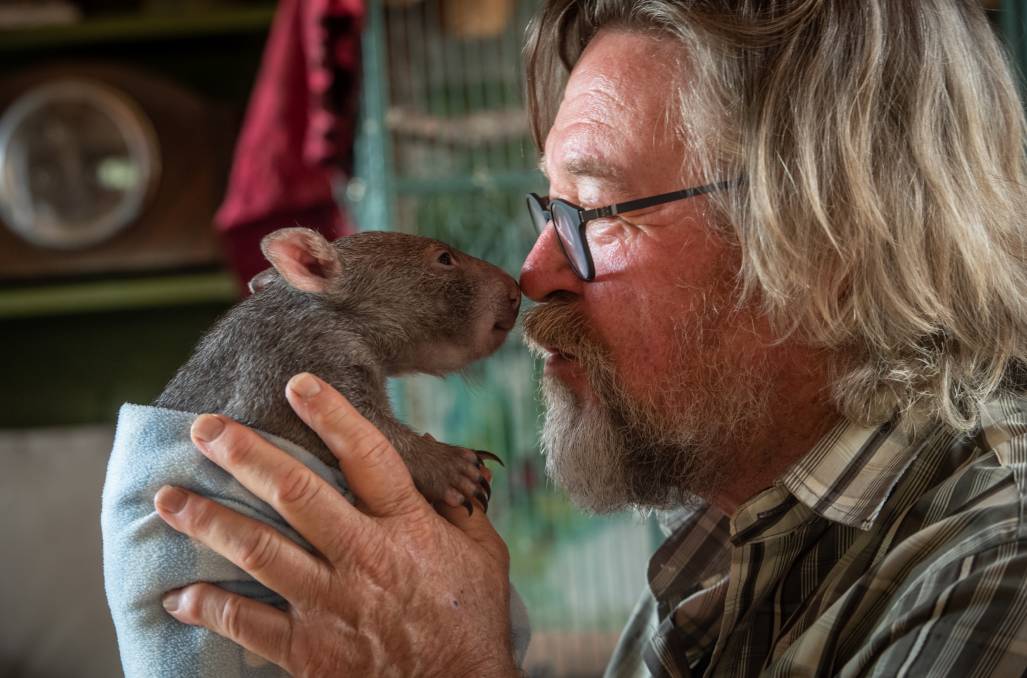
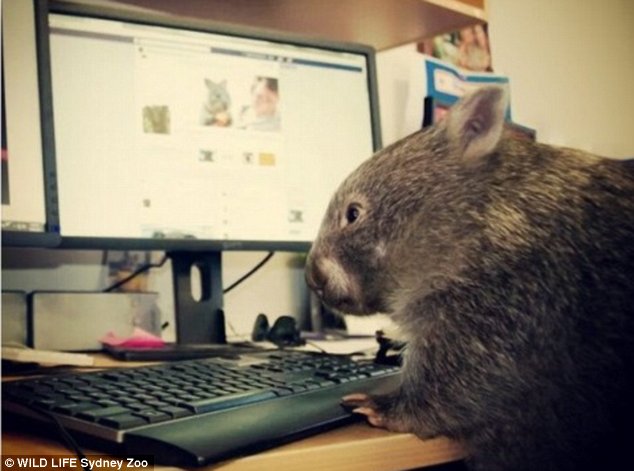
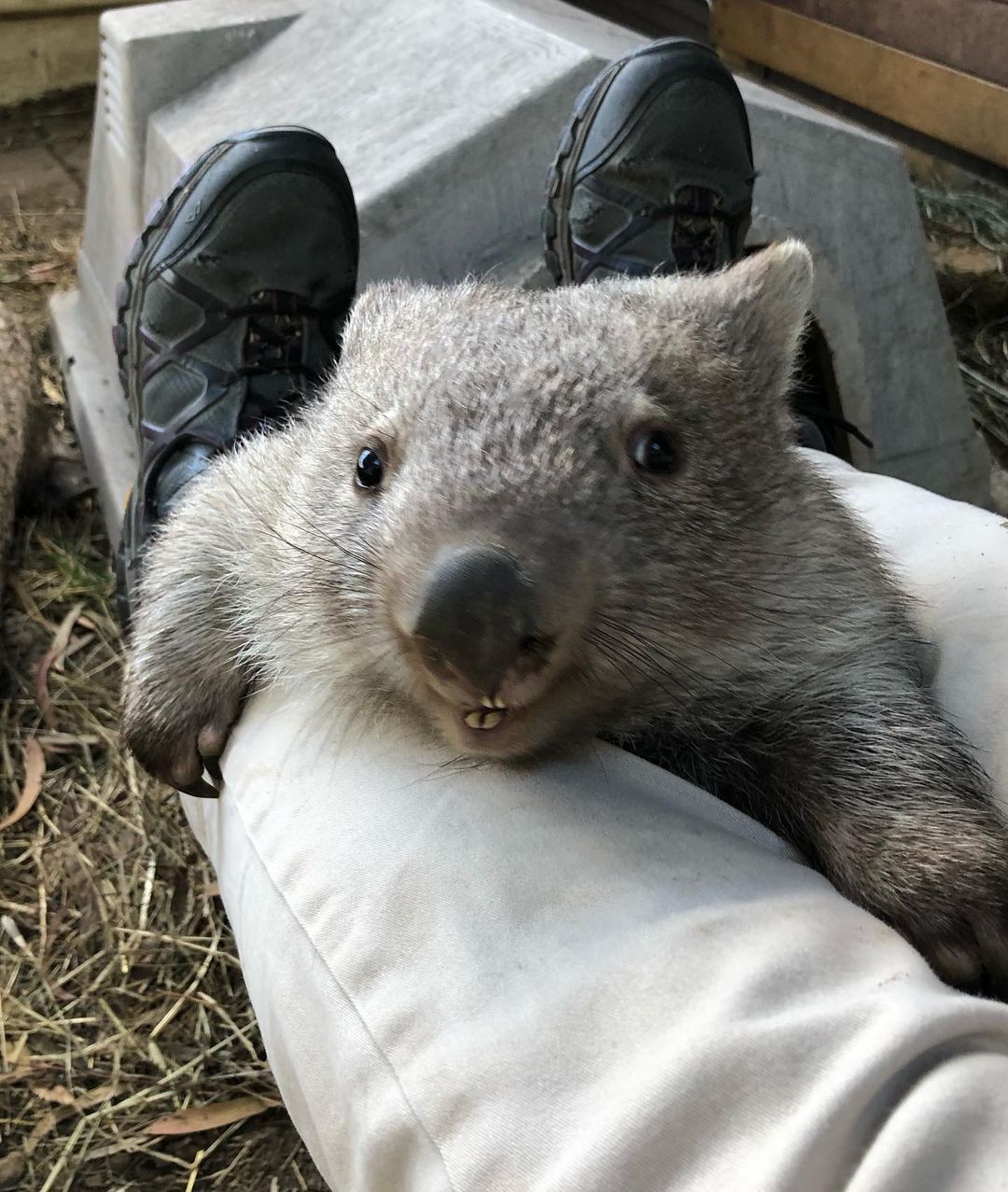
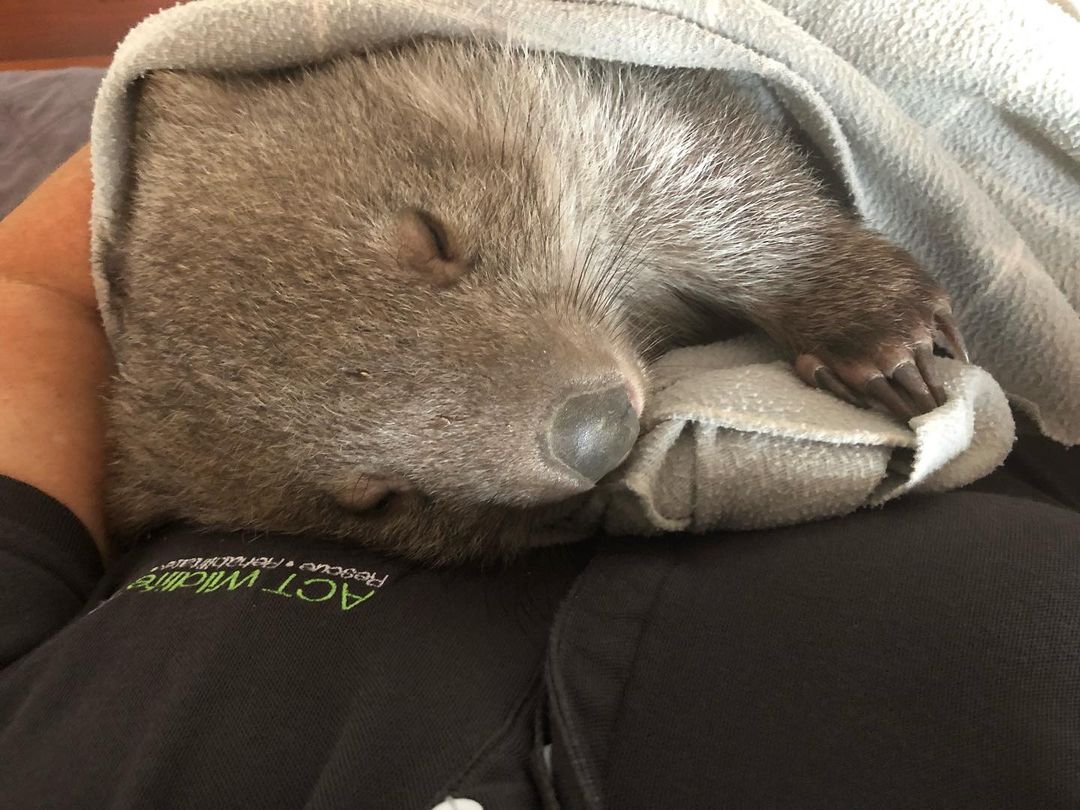
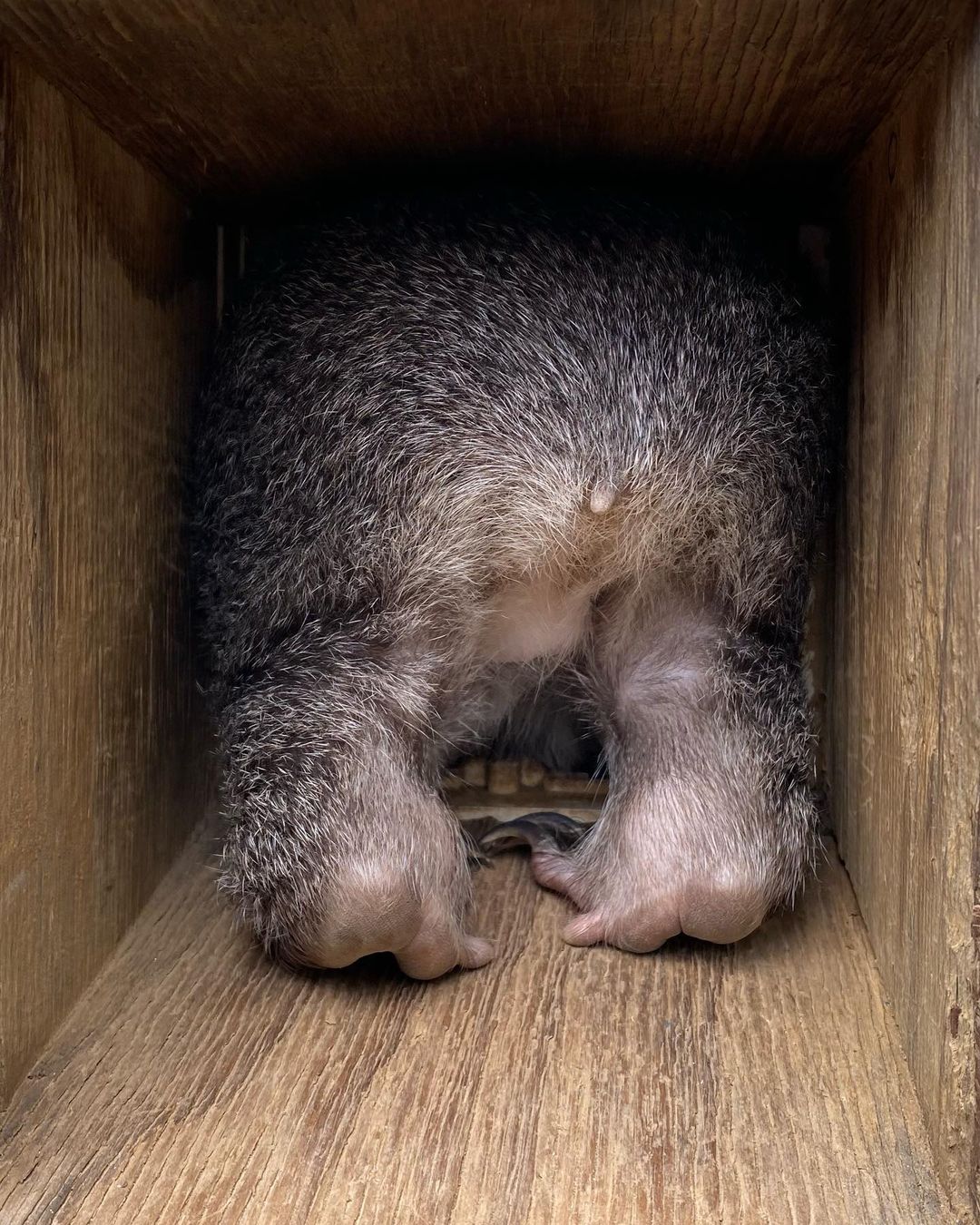
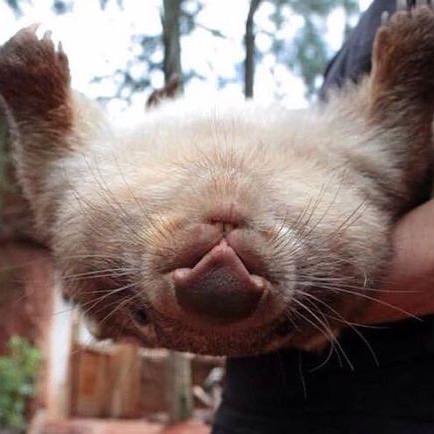
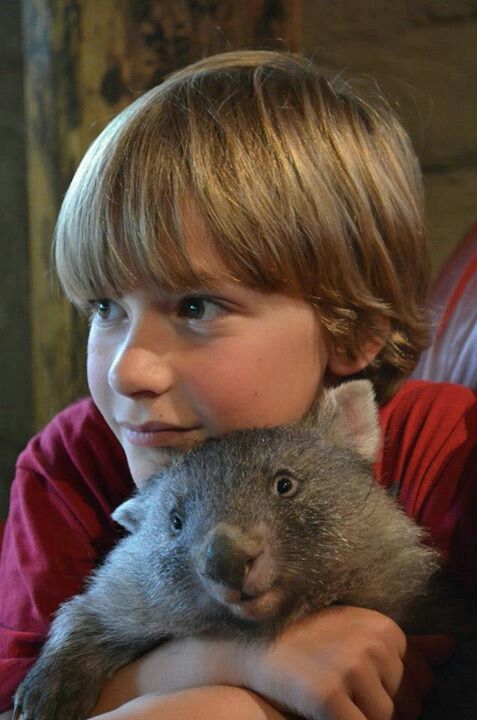
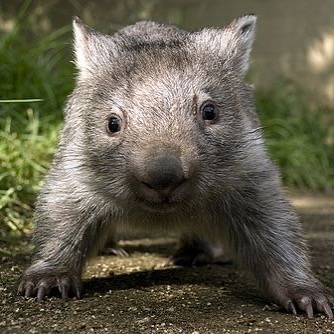
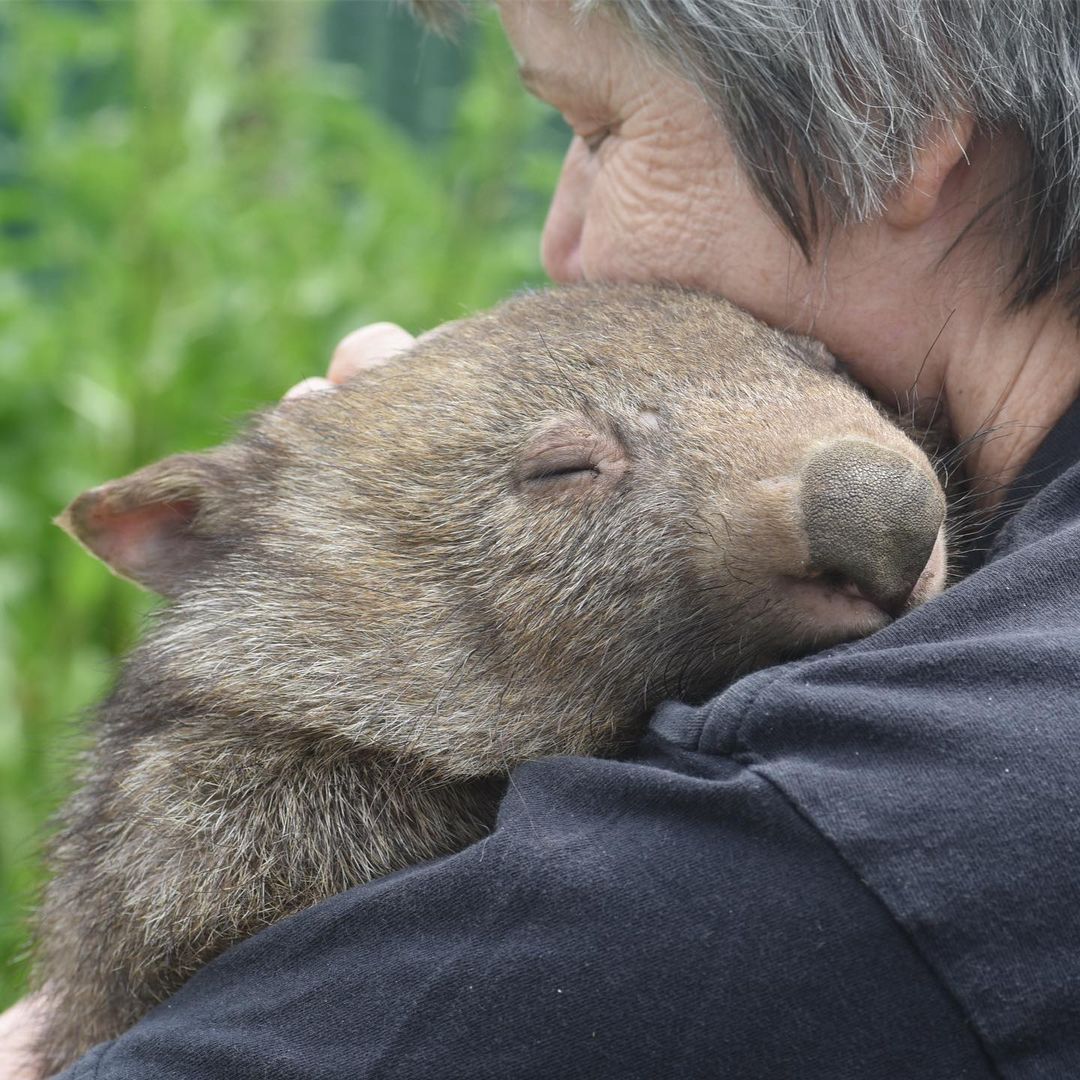
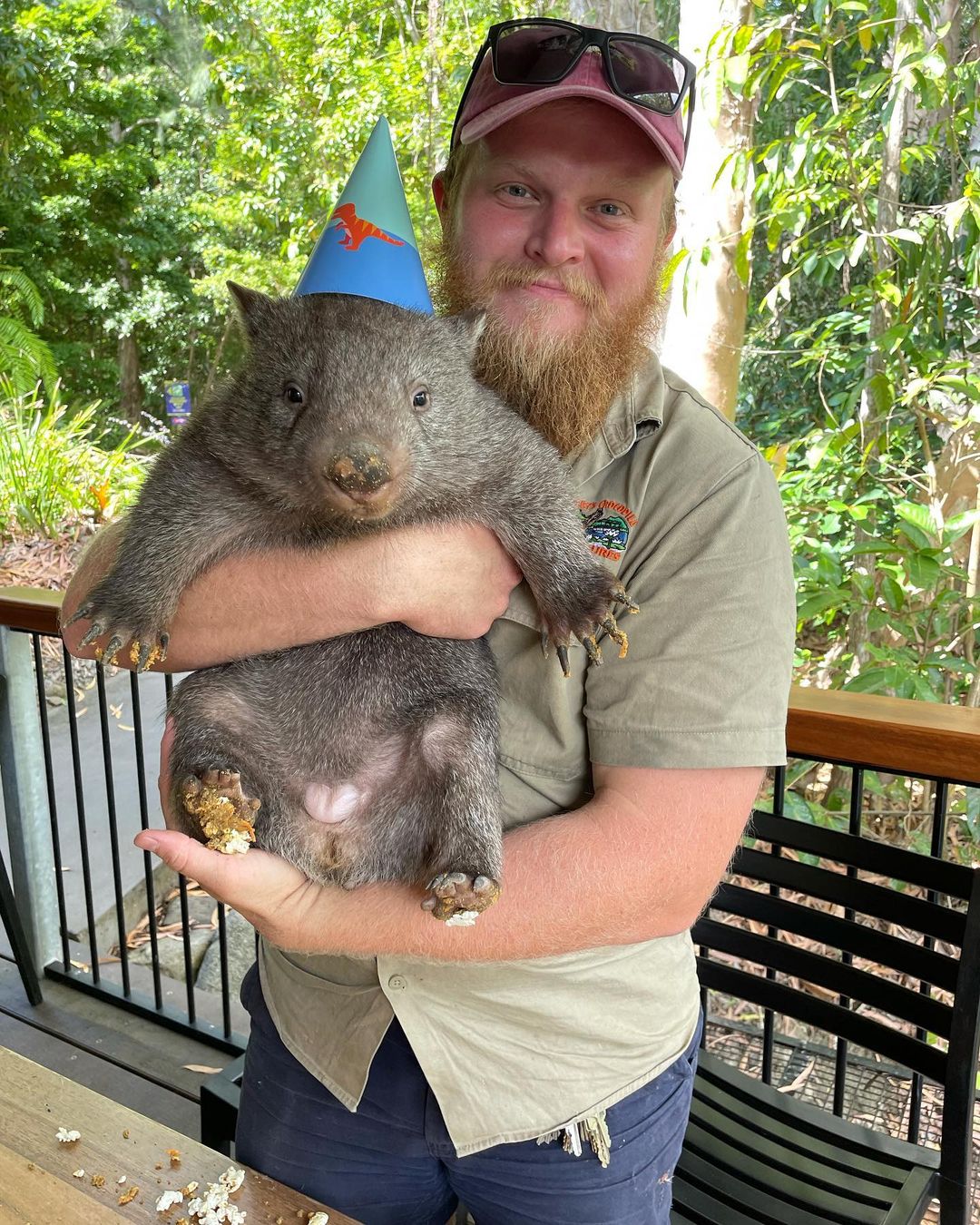
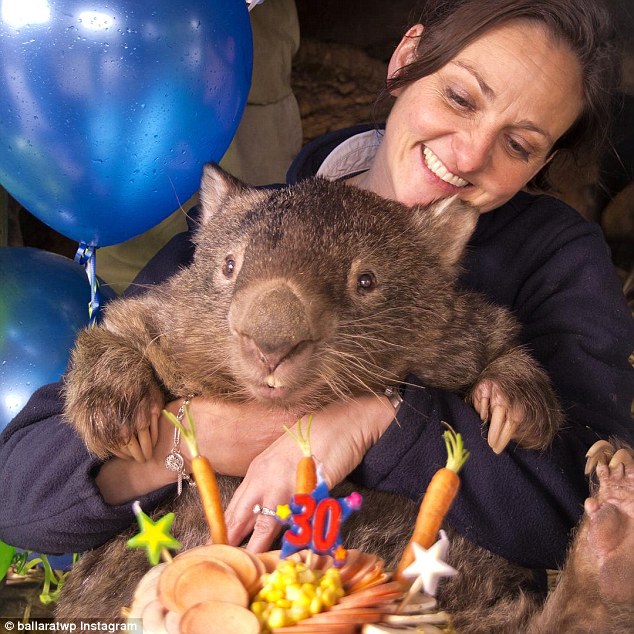
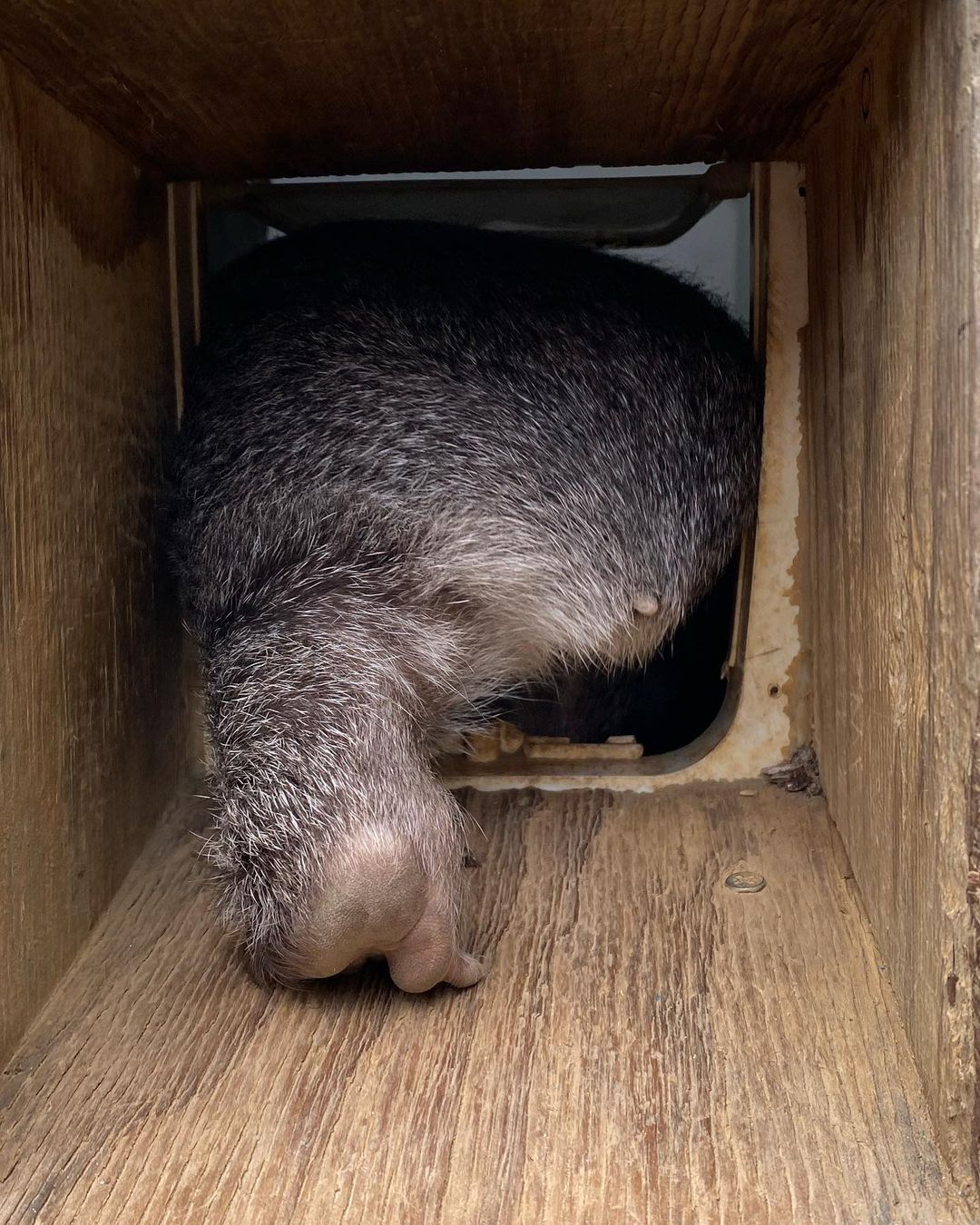
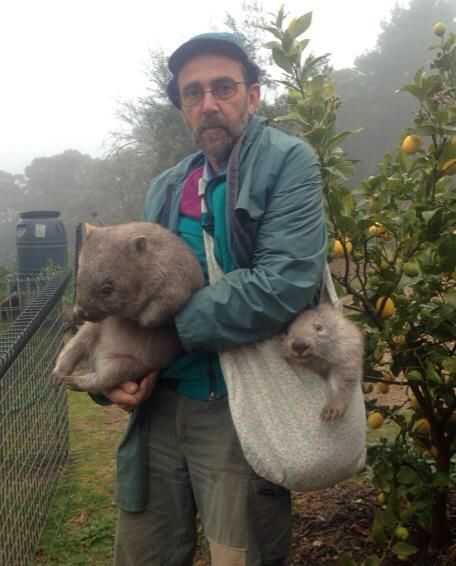
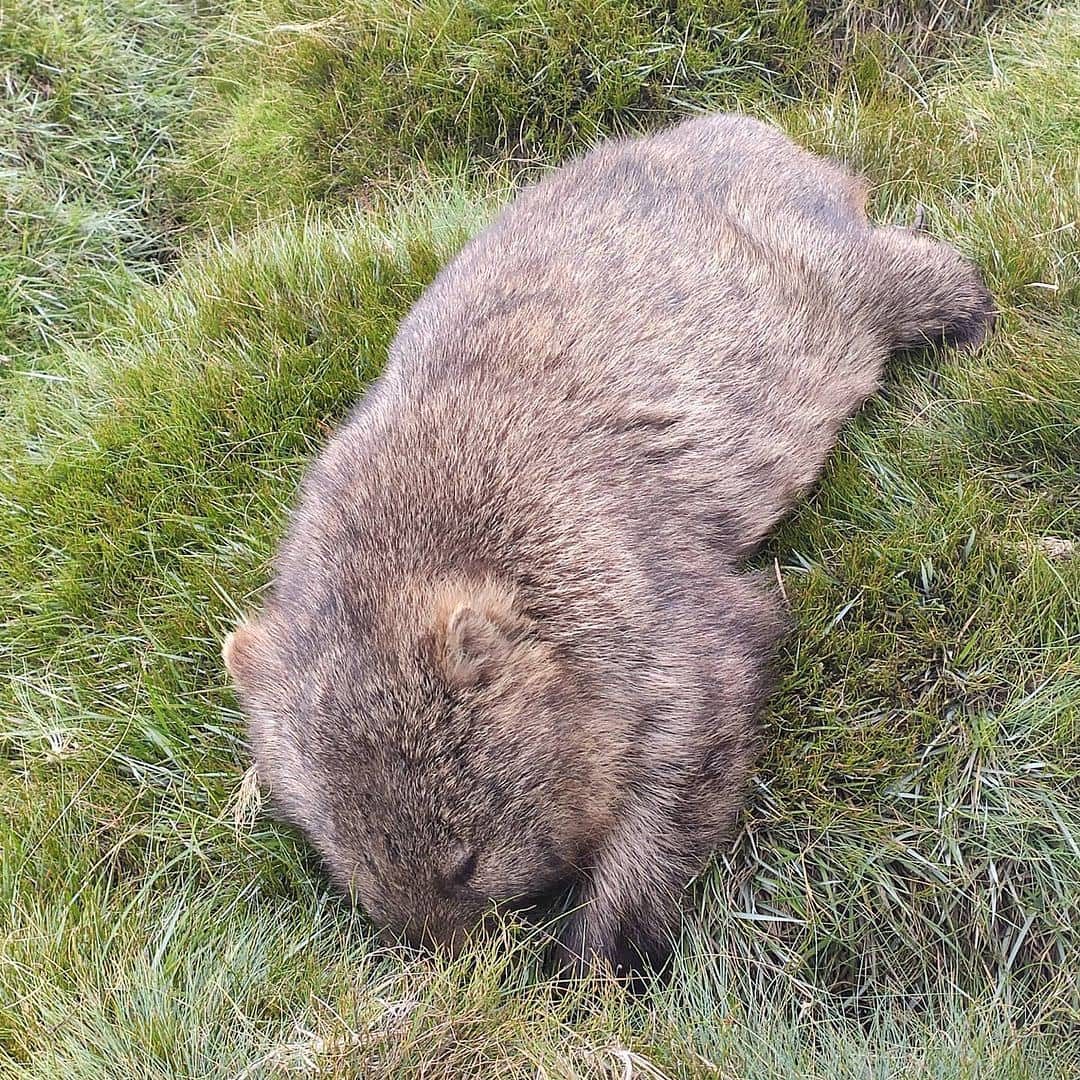
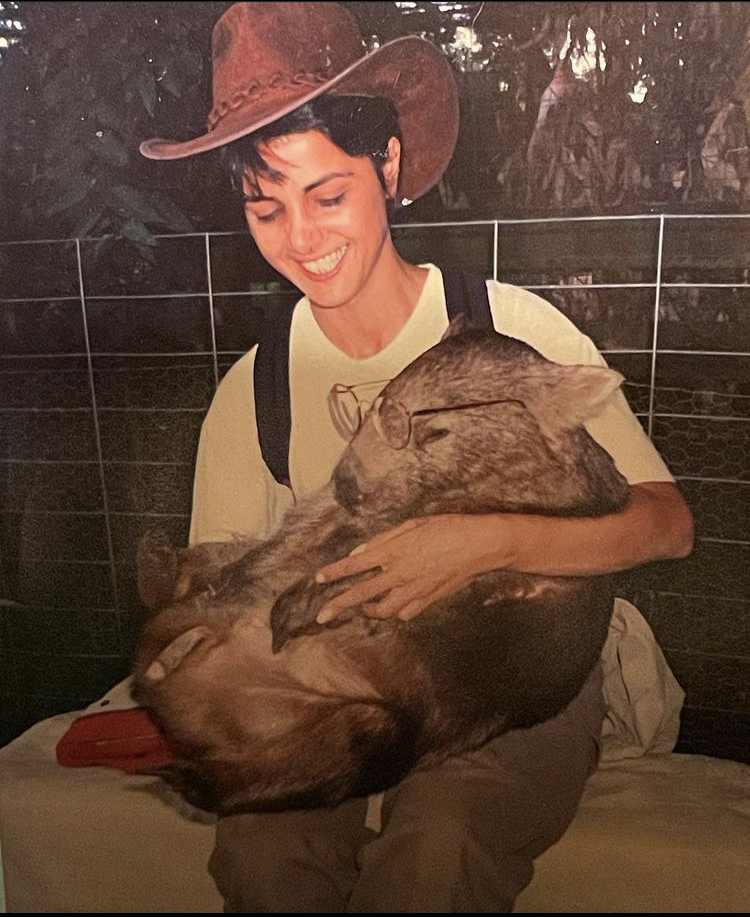
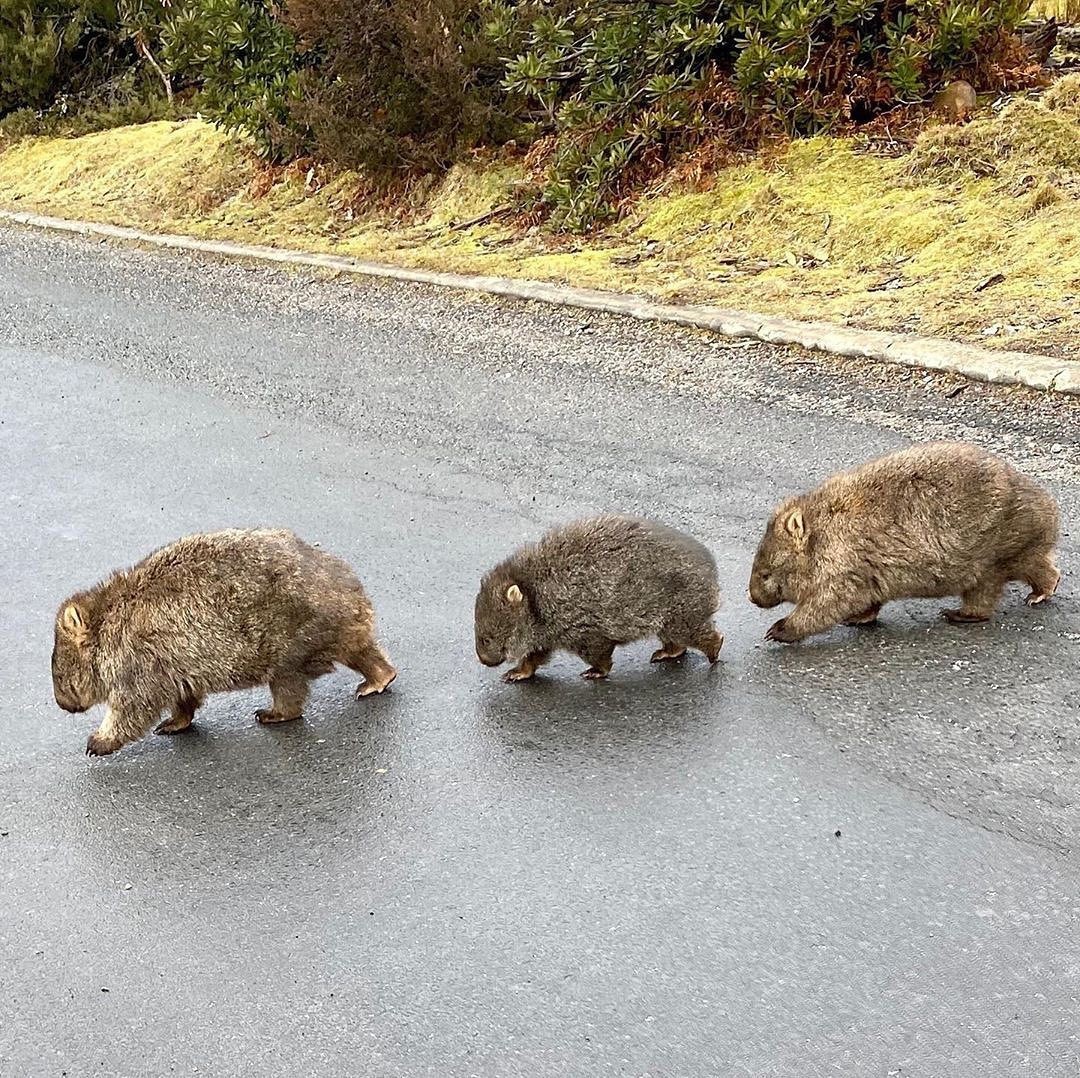
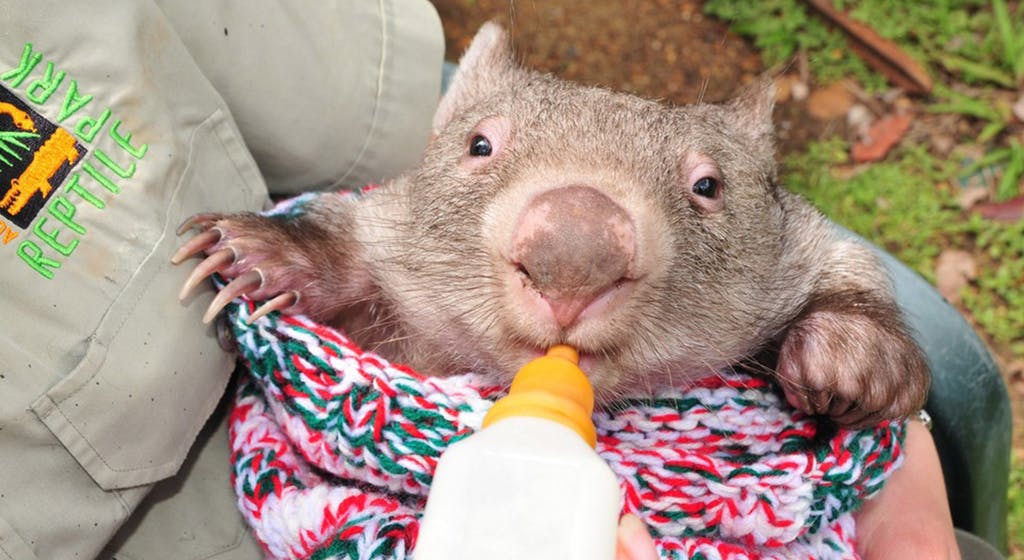
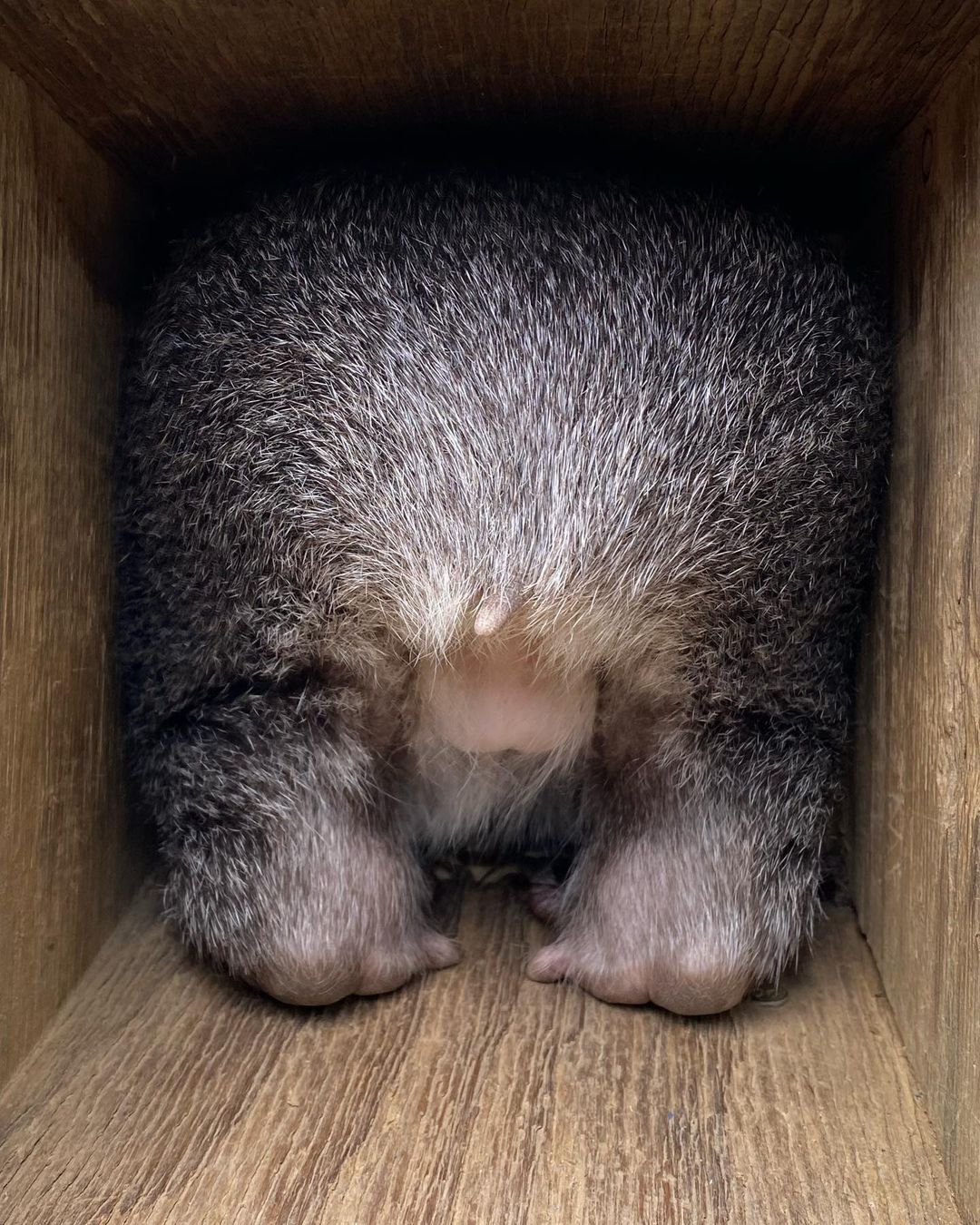
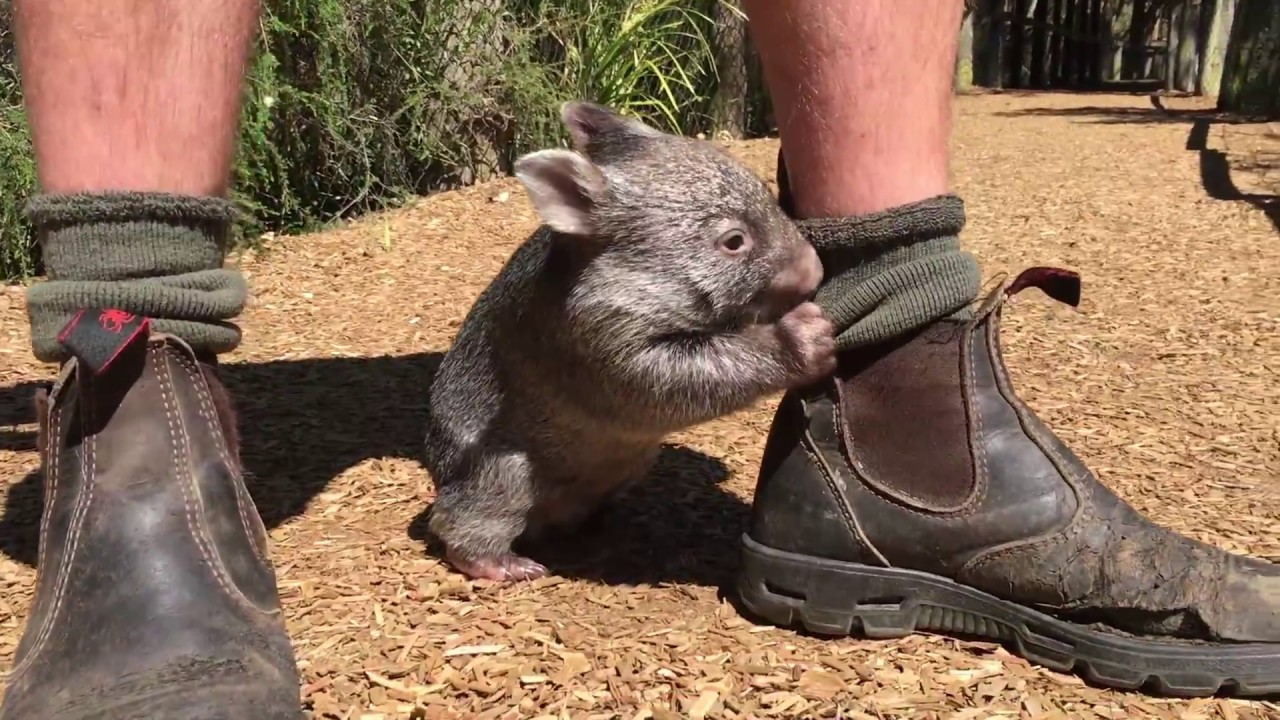
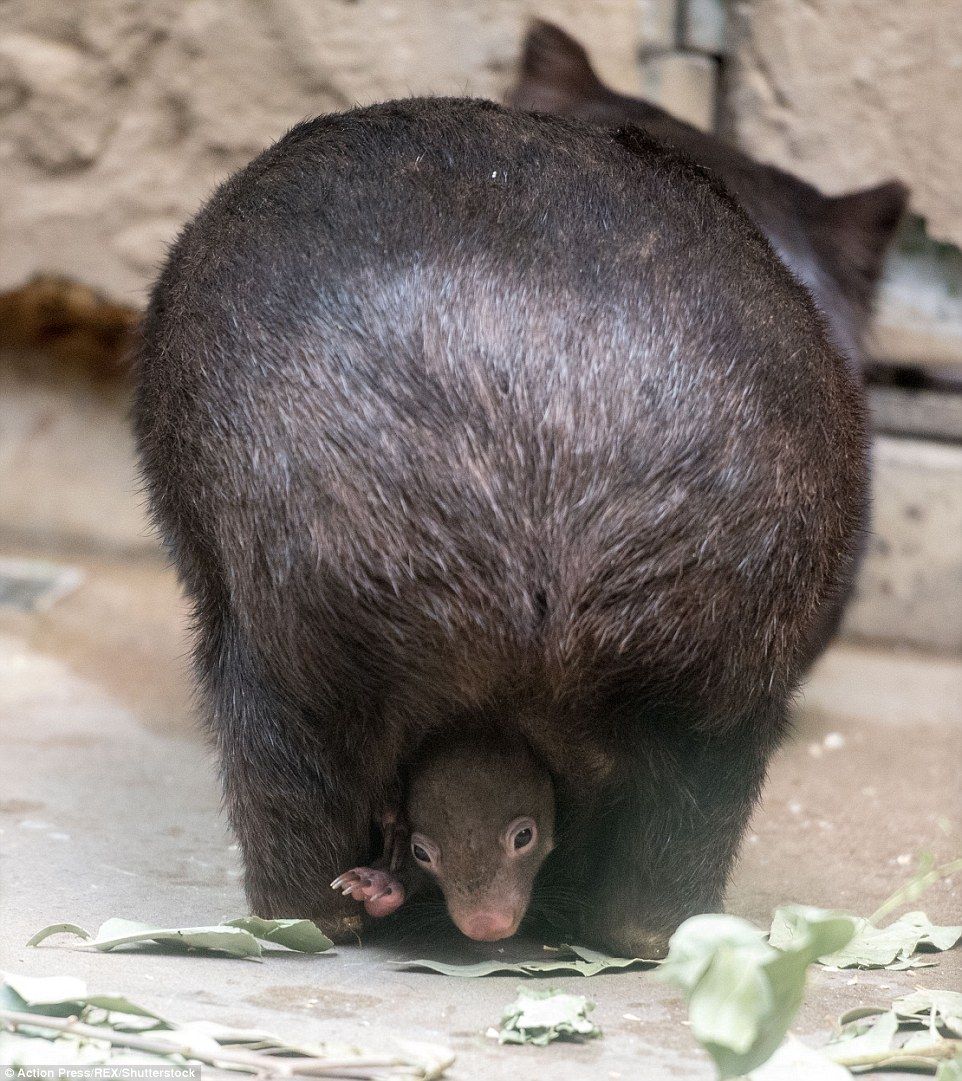
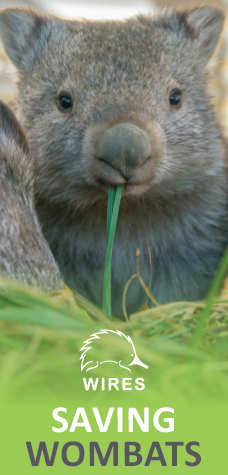
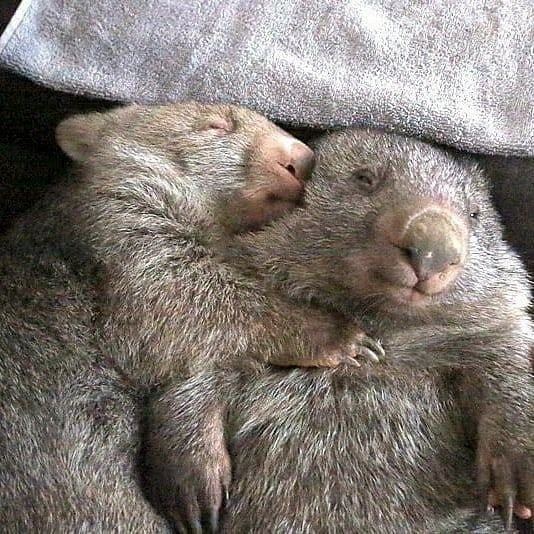
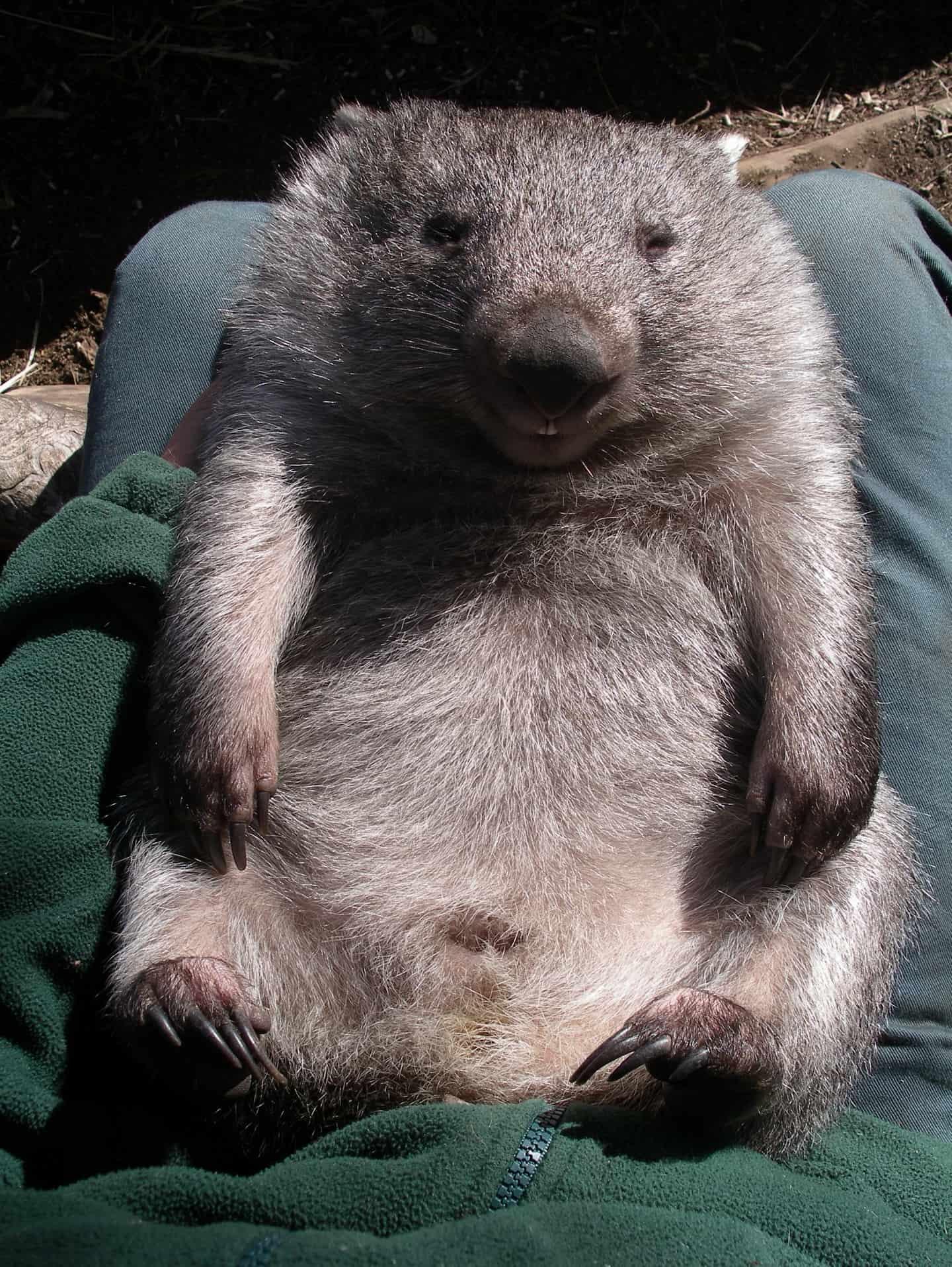
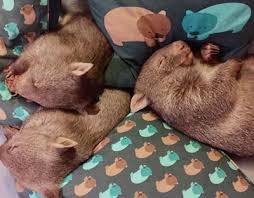
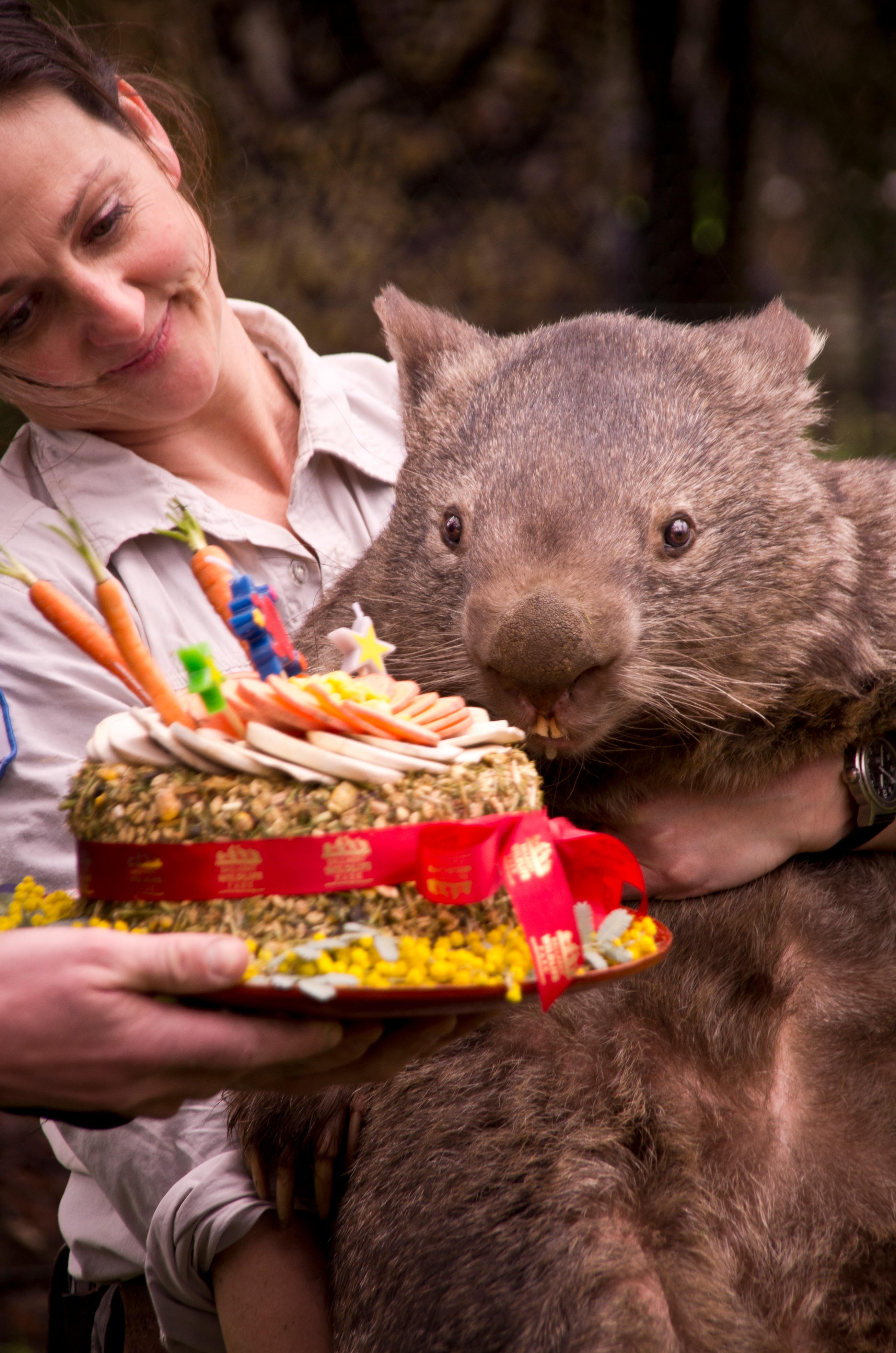
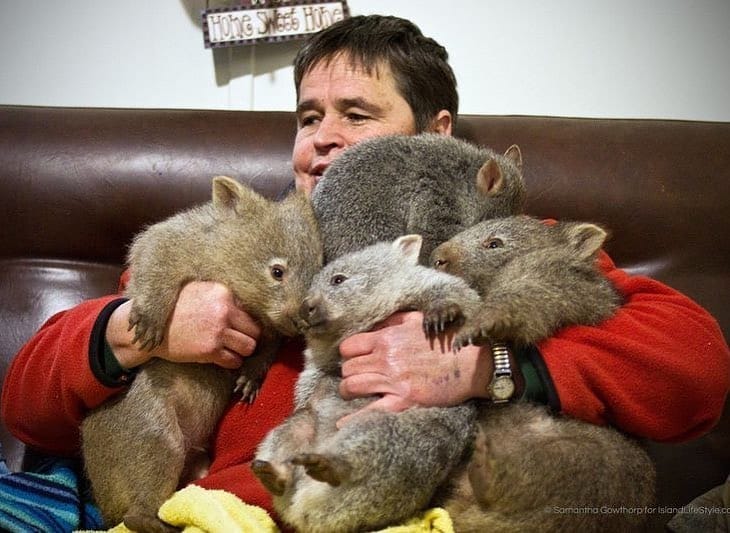
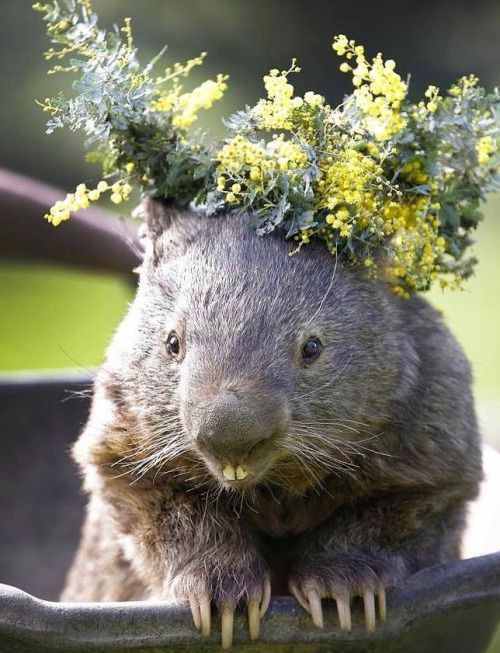
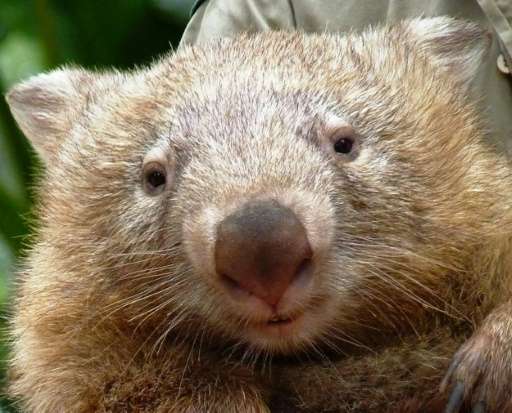

Wombat family
Originally Phascolomyidae; replaced by Vombatidae
Name derived from wambad, the animal's name in Dharuk (an Australian aboriginal language)
First known use 1798
Common wombat (Vombatus ursinus)
First wombat species described, by Shaw in 1800
Didelphus ursina - original name
Phascolomys proposed by Saint-Hilaire in 1803, preferred name in 19th century
Vombatus proposed by Desmarest in 1803, accepted name in 20th century
3 extant subspecies recognized: V. u. ursinus, V. u. hirsutus, V. u. tasmaniensis
Common names (Moeller 1990)
Common wombat (most common of the 3 species)
Also: naked-nosed wombat, coarse-haired wombat, island wombat, Tasmanian wombat, forest wombat
Originally called "native badgers" by settlers, sometimes "native bears" by farmers
Scientific name (Gove 1971; McIlroy 2008; Moeller 1990)
Vombatus from Australian aboriginal wambad (see above) + ursinus (bearlike) from Latin ursus for "bear"
Recent synonyms: Phascolomys mitchelli, Phascolomys ursinus, Vombatus hirsutus
Northern hairy-nosed wombat (Lasiorhinus krefftii)
Described by Owen in 1872
1 extant subspecies recognized: L. k. barnardi
2 extinct subspecies recognized: L. k. gillespiei and L. k. krefftii
Common names (Gove 1971; Jackson 2003; Moeller 1990)
Northern hairy-nosed wombat (northern distribution, hairs on rhinarium)
Also: Queensland wombat, Queensland hairy-nosed wombat, Moonie River wombat, yaminon (given by Aboriginal peoples)
Scientific name (Gove 1971; Horsup & Johnson 2008; Jackson 2003)
Lasiorhinus (hairy-nosed) from Greek lasios for "shaggy" + rhin- for "nose," krefftii after Gerrard Krefft, former Australian Museum curator
Recent synonyms: Wombatula gillespiei, Lasiorhinus gillespiei, Lasiorhinus latifrons gillespiei, Lasiorhinus barnardi, Lasiorhinus latifrons barnardi
Southern hairy-nosed wombat (Lasiorhinus latifrons)
Described by Owen in 1845
No subspecies described
Common names (Gove 1971; Jackson 2003; Moeller 1990)
Southern hairy-nosed wombat (southern distribution, hairs on rhinarium)
Also: hairy-nosed wombat, soft-furred wombat, long-eared wombat
Scientific name (Gove 1971; Taggart & Temple-Smith 2008; Jackson 2003)
Lasiorhinus (hairy-nosed) - see above
latifrons (broad forehead), from Latin latus for "wide, broad" + frons for "forehead" (Jackson 2003; Gove 1971)
Recent synonyms: None
Evolutionary History
Cloest relatives to wombats: koalas (Murray 1998)
Vombatidae (wombat) and Phascolarctidae (koala) are the only surviving families of suborder Vombatiformes
Wombat and koala lineages split prior to late Oligocene epoch
Earliest wombats (Murray 1998; Brewer 2008)
Rhizophascolonus species (rooted-toothed wombats) - appeared in late Oligocene/early Miocene
Rhizophascolonus crowcrofti - earliest described vombatid
Appeared in late Oligocene/early Miocene
Known only from a few isolated fossil cheek teeth
These primitive vombatids were only ones with closed roots (teeth did not grow continuously)
Much of Australia covered by semitropical forests during this time
Emergence of diverse species - late Miocene to Pleistocene (Tyndale-Biscoe 2005; Woolnough & Steele 2001)
A variety of different wombat species evolved
Many were larger than extant (currently living) species
3 major genera
Warendja wakefieldi
Lived from 10 million years ago (late Miocene) to 40,000 years ago (Pleistocene)
Least specialized, smallest - up to 20 kg (45 lb)
Resembled very large rabbit
Phascolonus gigas - giant wombat
Lived from 5 million years ago (Pliocene) to 40,000 years ago (Pleistocene)
Largest wombat ever in existence
180-250 kg (400-550 lb)
About 6 times the body mass and 2 times the length of the 3 extant wombat species
Phascolomys medius
Lived from 2 million years ago (Pliocene) to 40,000 years ago (Pleistocene)
Up to 80 kg (175 lb)
Extinction likely due to changing environmental conditions (Triggs 1996)
Series of ice ages in Pleistocene - cold temperatures caused landscape to become increasingly dry
Extant genera (Tyndale-Biscoe 2005)
Vombatus and Lasiorhinus genera emerged about 2 million years ago (Pleistocene)
Originally much wider distribution than today
Vombatus - throughout Queensland, south-eastern Australia, Tasmania, islands in Bass Strait
Lasiorhinus - widespread across inland Australia
3 subspecies of L. krefftii known in modern times: L. k. barnardi, L. k. gillespiei, L. k. krefftii
Only 1 remnant population still extant (subspecies unknown)
Origins of burrowing in Vombatidae (reviewed in Woolnough & Steele 2001)
Debated - burrowing may be recent adaptation in smaller wombat ancestor
Advantage - water conservation, allowed extant species to survive increasing aridity of last 2 million years
Giant wombat likely did not burrow
Very large grazing animal - chest girth about 3 times larger than the extant species
Would need such large-diameter burrows that they would collapse in all but hard soil types
But digging large burrows in hard soils would require unreasonable amount of time and energy
Little time for digging - needed to spend most of its time eating and foraging over large range to meet its energy needs
Cultural History
Aboriginal people (Triggs 1996)
Arrived in Australia about 50,000 years ago
Hunted wombats for food
One tribe's hunting practices detailed in 2005 book Wardugu Wirn - Hunting for Wombat: A Wirnagu Story Book (Monaghan 2012)
Made string from wombat fur
European settlers (Triggs 1996)
Arrived in Australia about 200 years ago
Hunted wombats for food and to remove what they considered a pest
First island wombat encounter
Ship Sydney Cove wrecked on Preservation Island in Bass Strait (near Tasmania), 1797
Wombats found - became mainstay of diet that kept sailors alive one year until rescued
Rescuer Matthew Flinders returned to Sydney Town with live wombat, presented to Governor Hunter
Wombat lived 6 weeks - Hunter sent preserved specimen to London, noting mountain natives called it a wombach
First mainland wombat encounter
James Wilson and John Price - expedition into Blue Mountains west of Sydney, 1798
Price gave first European description of a wombat: "an animal about 20 inches high, with short legs and a thick body with a large head, round ears, and very small eyes, is very fat and has much the appearance of a badger" (Triggs 1996, p. 9)
Present day (Triggs 1996)
Many humans consider wombats a pest
Wombats damage fences, vehicles fall through roofs of burrows
Farmers/ranchers dig up burrows, shoot/poison wombats
Other humans rescue orphaned wombats in pouch (4-8 months old) from road-killed mothers
Well-intentioned people attempt hand-rearing, but young wombats challenging to raise
Gnawing, digging behaviors - very destructive
Demand constant attention, bite for attention
Very active at night
High death rate - stress, insufficient warmth, incorrect diet
Law requires surrender to appropriate wildlife authority
Will send to refuge/individuals with previous rearing success, return to wild when ready
Children's books
Diary of a Wombat, Jackie French (2002)
Wombat Walkabout, Carol Diggery Shields (2009)
How to Scratch a Wombat: Where to Find It ... What to Feed It ... Why It Sleeps All Day, Jackie French (2009)
Diary of a Baby Wombat, Jackie French (2010)
Local interest
Wombat Day - October 22 in Australia (unofficial)
Southern hairy-nosed wombat is South Australia's faunal emblem
